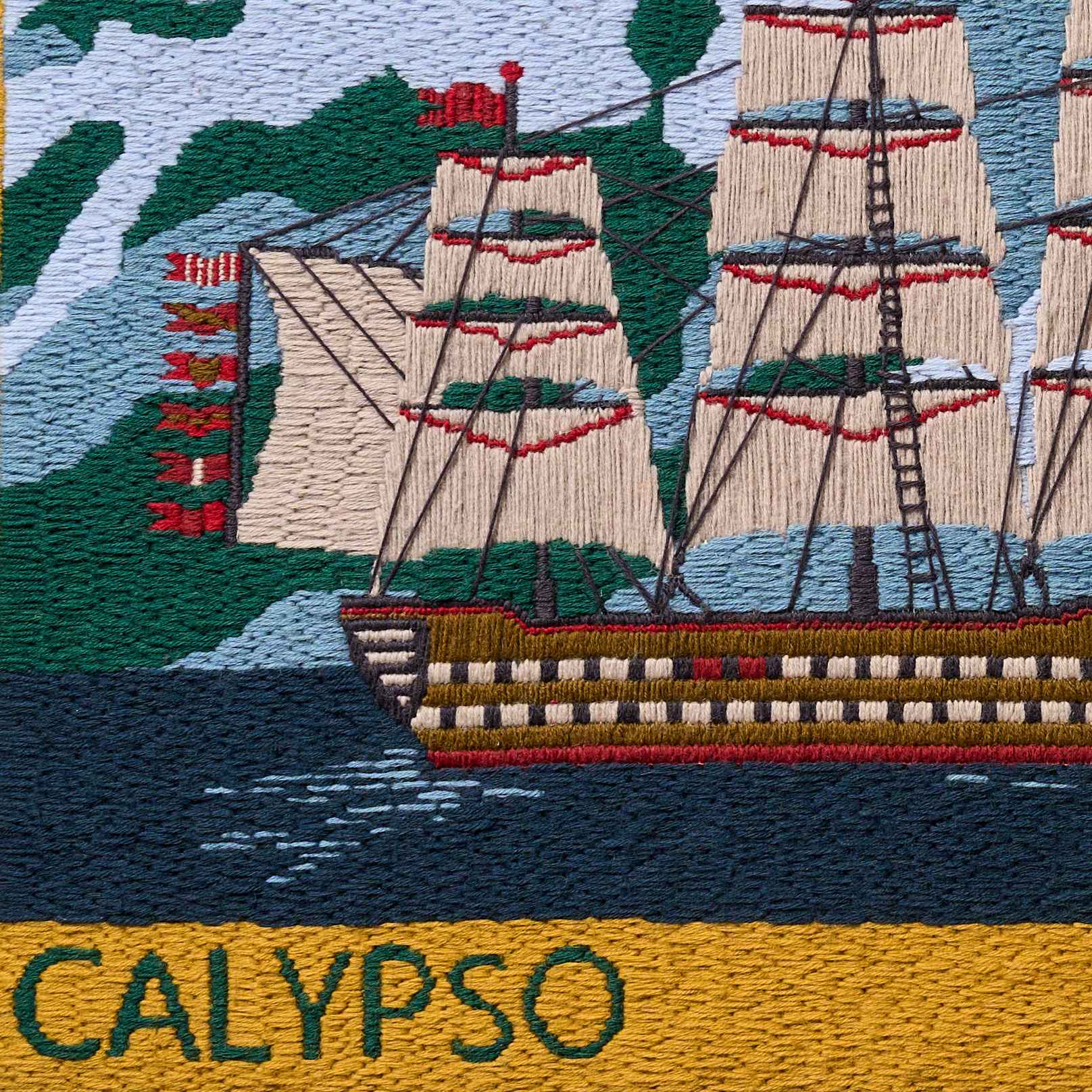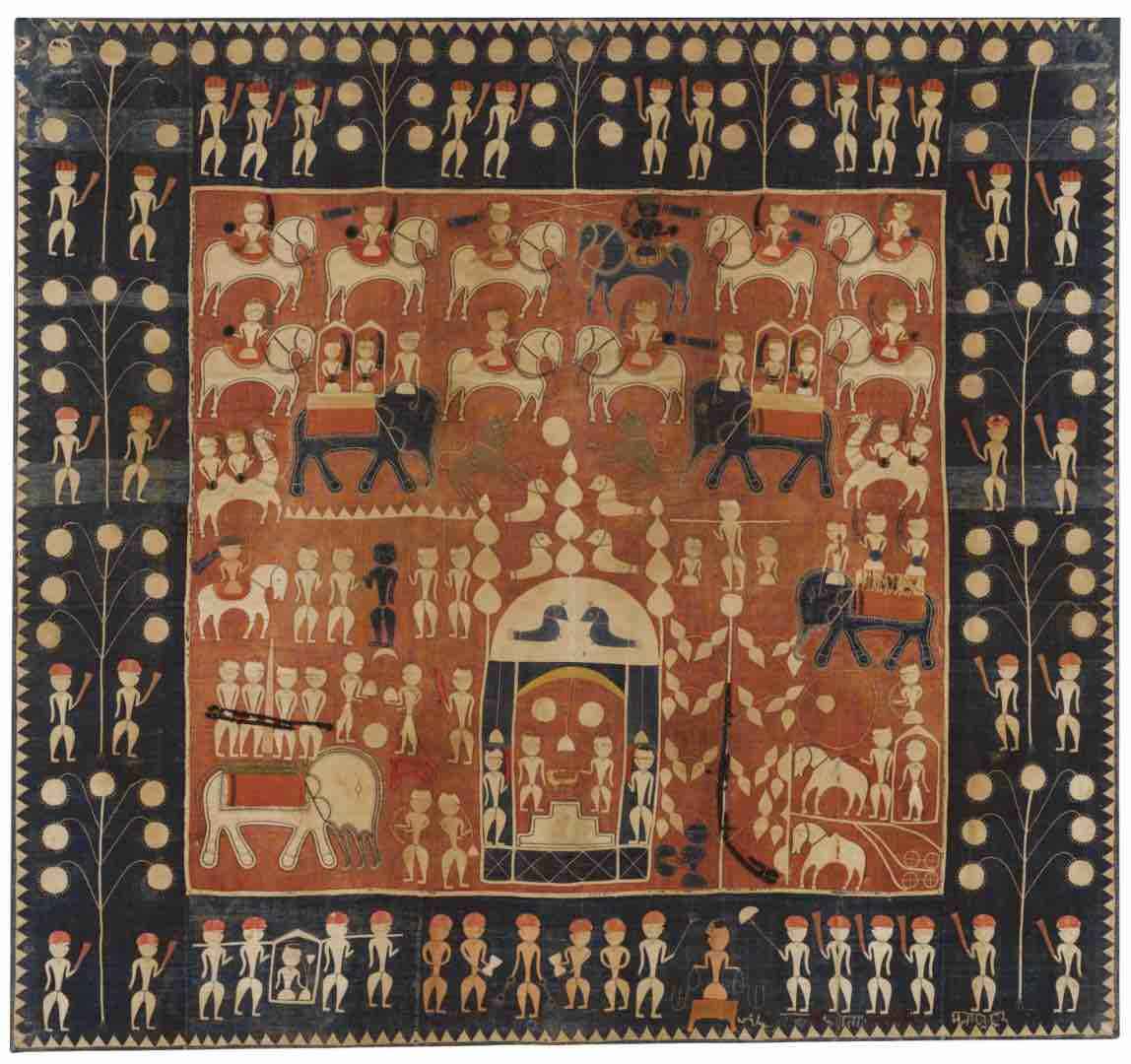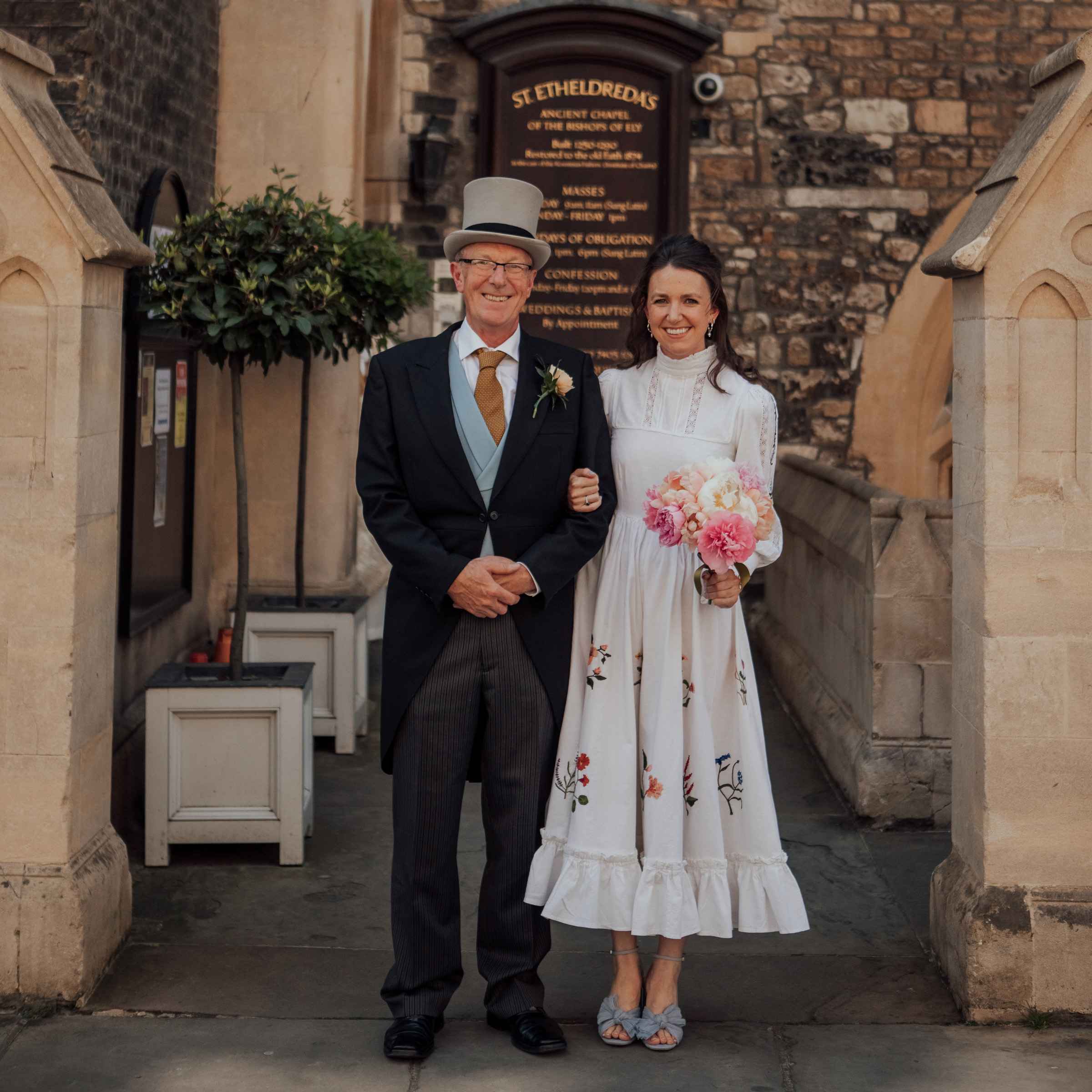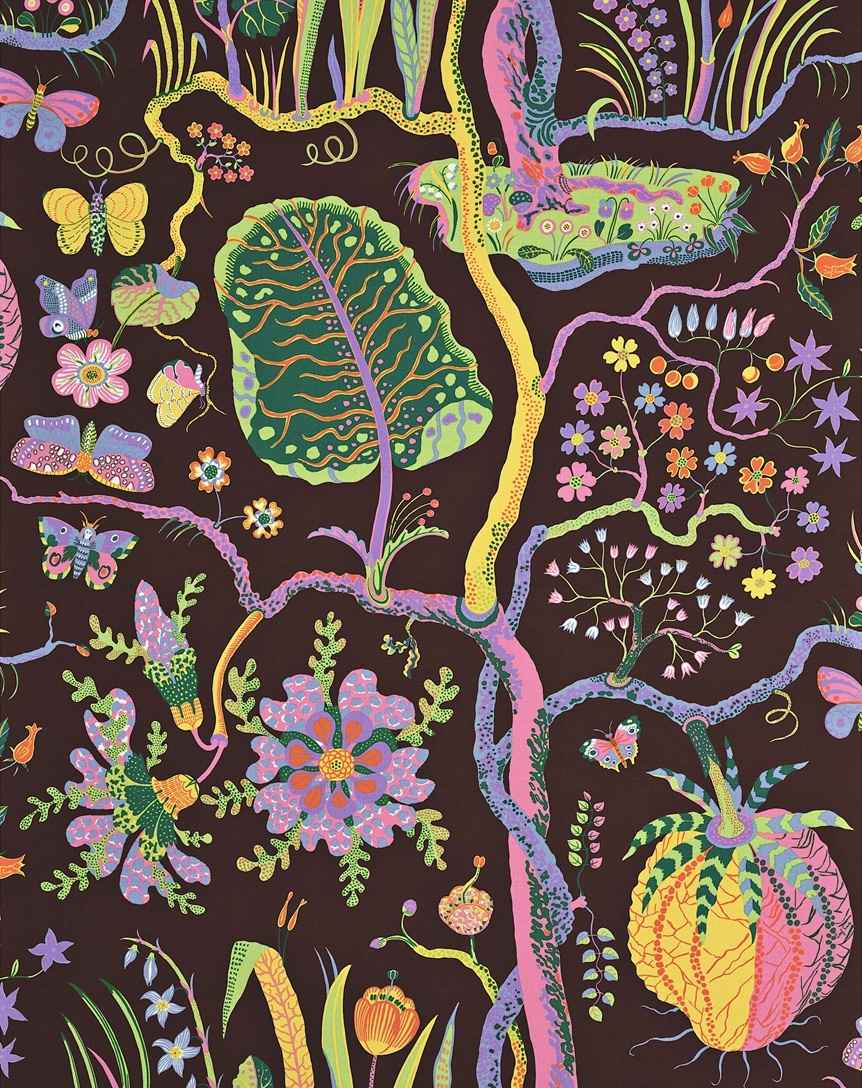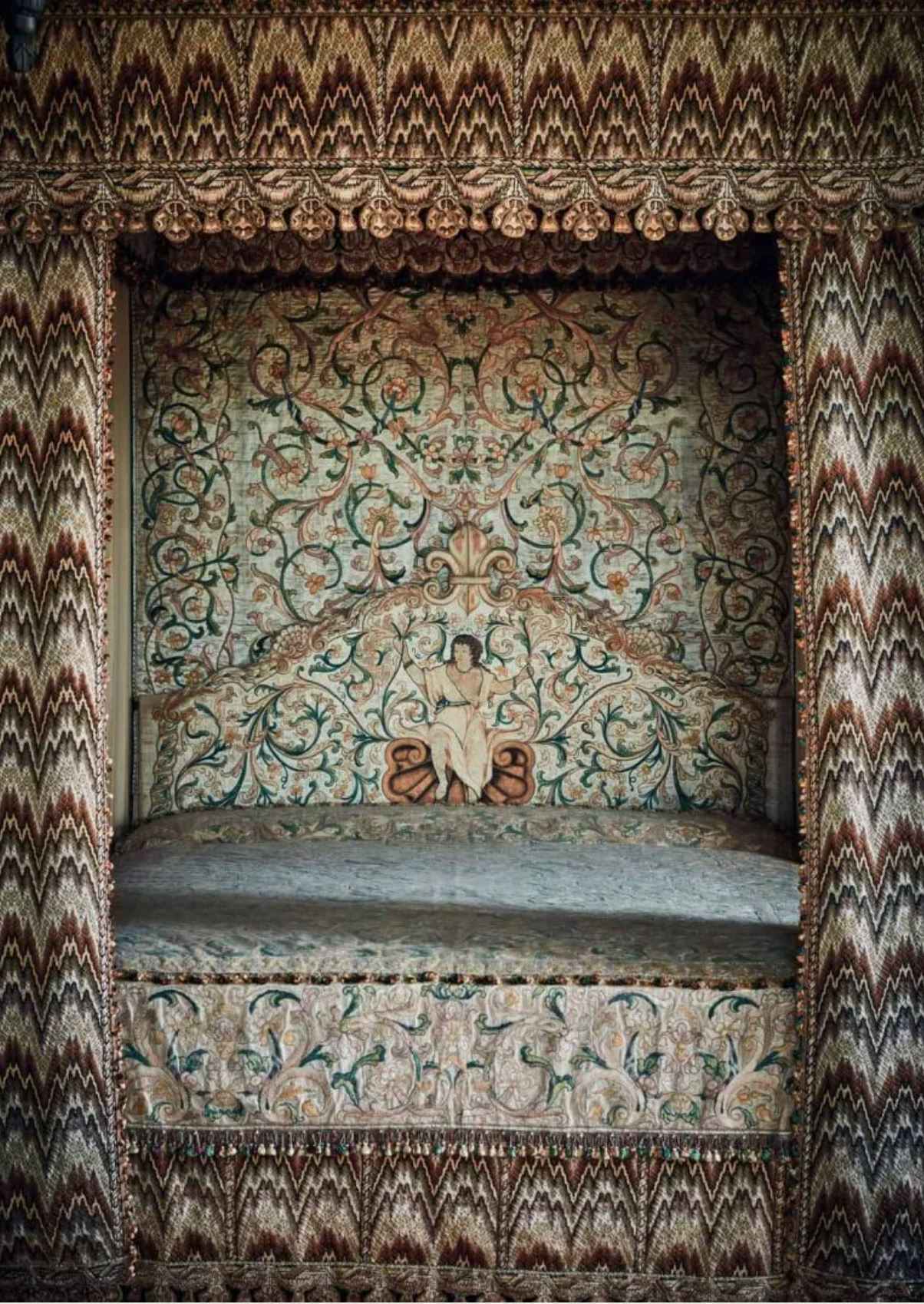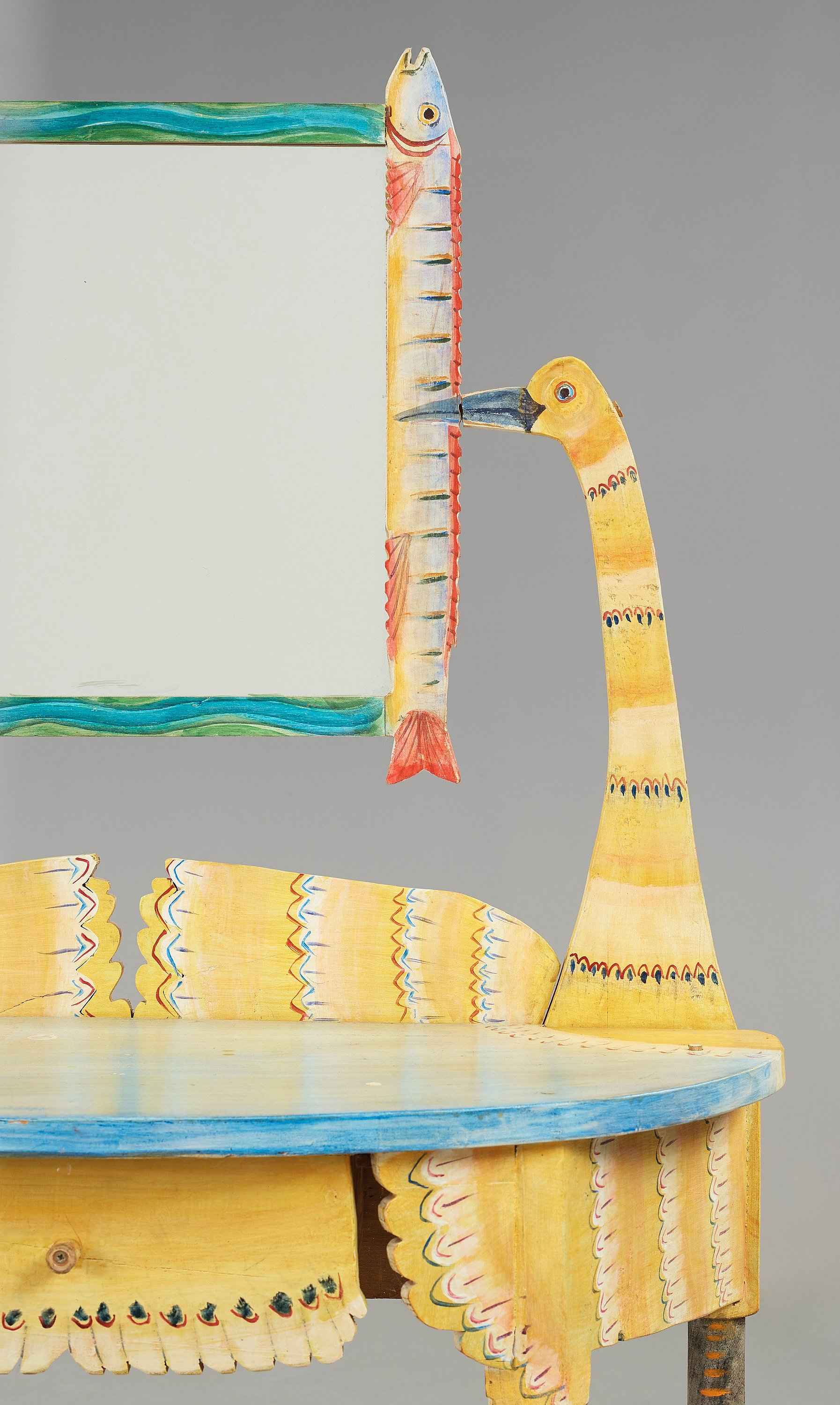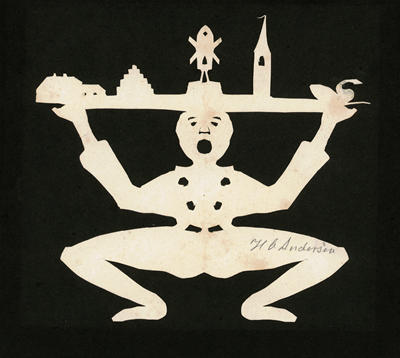
Sailor's Woolworks: The History and Reinvention
When I moved into my first flat, I made a reckless purchase. For months I had walked past David Griffiths antiques in Camden Passage on my way home from work. Just at the back of the shop, slightly out of sight, was the most magnificent sailors woolwork, dated to 1780. Every evening I would pause and gaze in longingly at it.
I happened to be in Yorkshire with my cousin Rose on the weekend that the slow, stressful progress of buying a flat finally completed. I had been rhapsodising about the woolwork in the window, how perfect it would be hanging above my fire, and she asked me why was I hanging around... celebrate this next stage of life, buy the woolwork! She even went one step further and called David Griffith for me, haggling down the price (not something I ever feel comfortable doing!). Sometimes you need that person in your like to encourage you to do the slightly irrational thing. Whilst I hadn't budgeted for it, I adjusted some of the other updates I was doing to the flat, and bought the woolie.
I have never regretted it - my sailor's woolwork is my most prized possession. The first item I would save from a fire (after Roger of course!). Since purchasing mine about 7 years ago, there has been a real resurgence in their popularity so handily, and quite unintentionally, it was also one of my wisest investments. I am sure David will regret parting with that piece!
So it felt about time I put an article on The Journal to celebrate my love for woolworks, tell you a bit about their history, modern makers still creating them and why I wanted to create our range of Woolies.
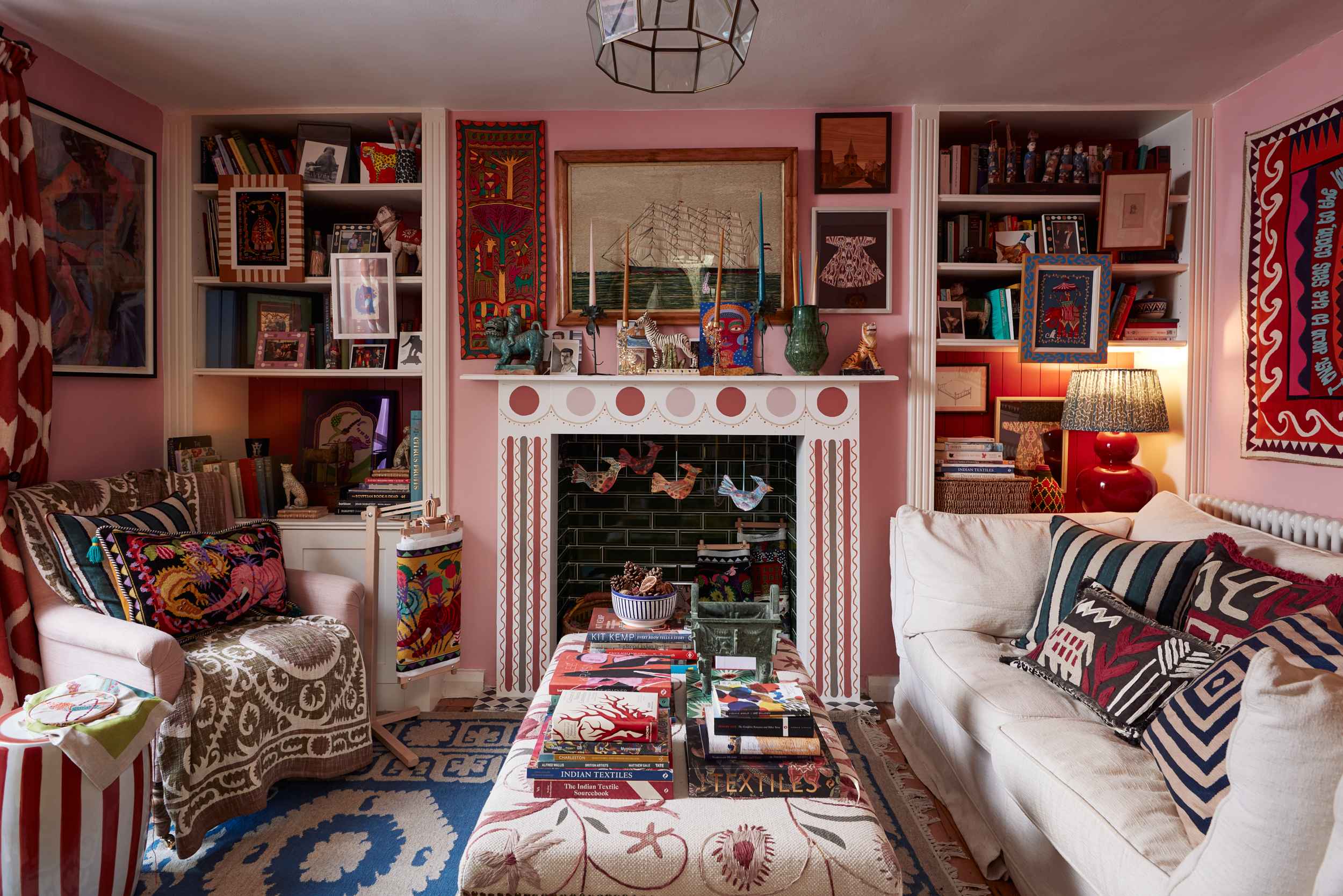
In the 18th and 19th century, crafts became a popular pastime for British Navy and Royal Marines sailors during long periods away from home. Alongside other nautical arts such as wood carving, scrimshaw and rope work, woolworks are a type of folk art that showed off the sailor’s meticulous needlework skills (an essential requirement for any seafaring occupation!), as well as being a charming work of art in itself.



Colloquially known as ‘woolies’, these embroideries were generally made from leftover coloured wool stitched onto cotton or linen using a mixture of long and short stitches. They are very rarely signed, so the names of the artists are largely unknown. The types of stitched woolworks generally fall into three categories: ship portraits, commemorative pieces, and love tokens.

The first type of woolwork is the ship’s portrait, shown ‘broadside’ (side on, as shown above) and nestled within vibrant crashing waves, or coming into or out of port with glimpses of land, people and buildings in the background. Ships are pictured in full sale with flags stood proud at full mast.
Whilst these can be very simple, like my original woolwork which inspired our needlepoint kit Calypso they can also be highly decorative. Its common to see boats framed with flags, with decorative borders, or other details around as shown below.

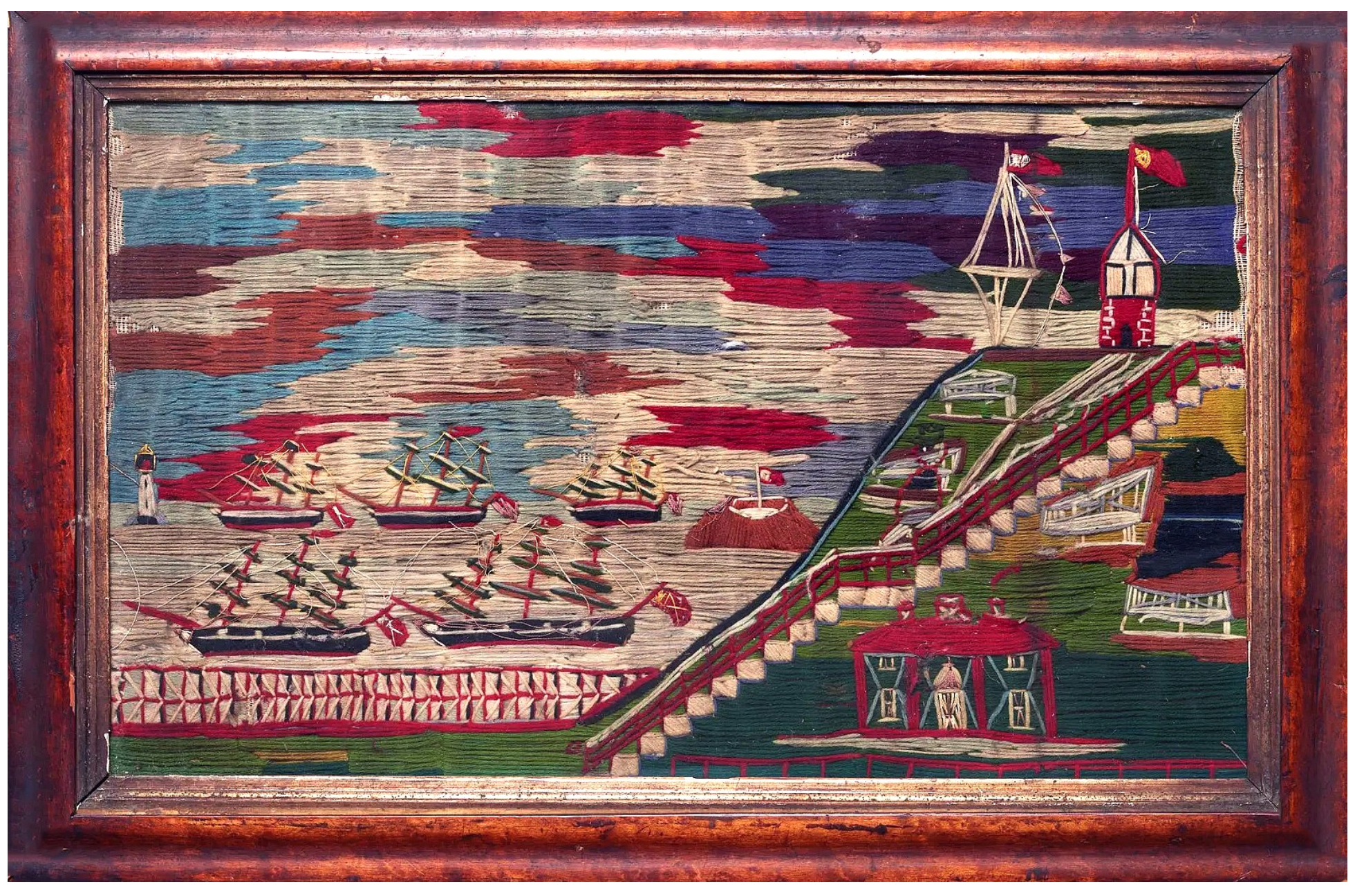
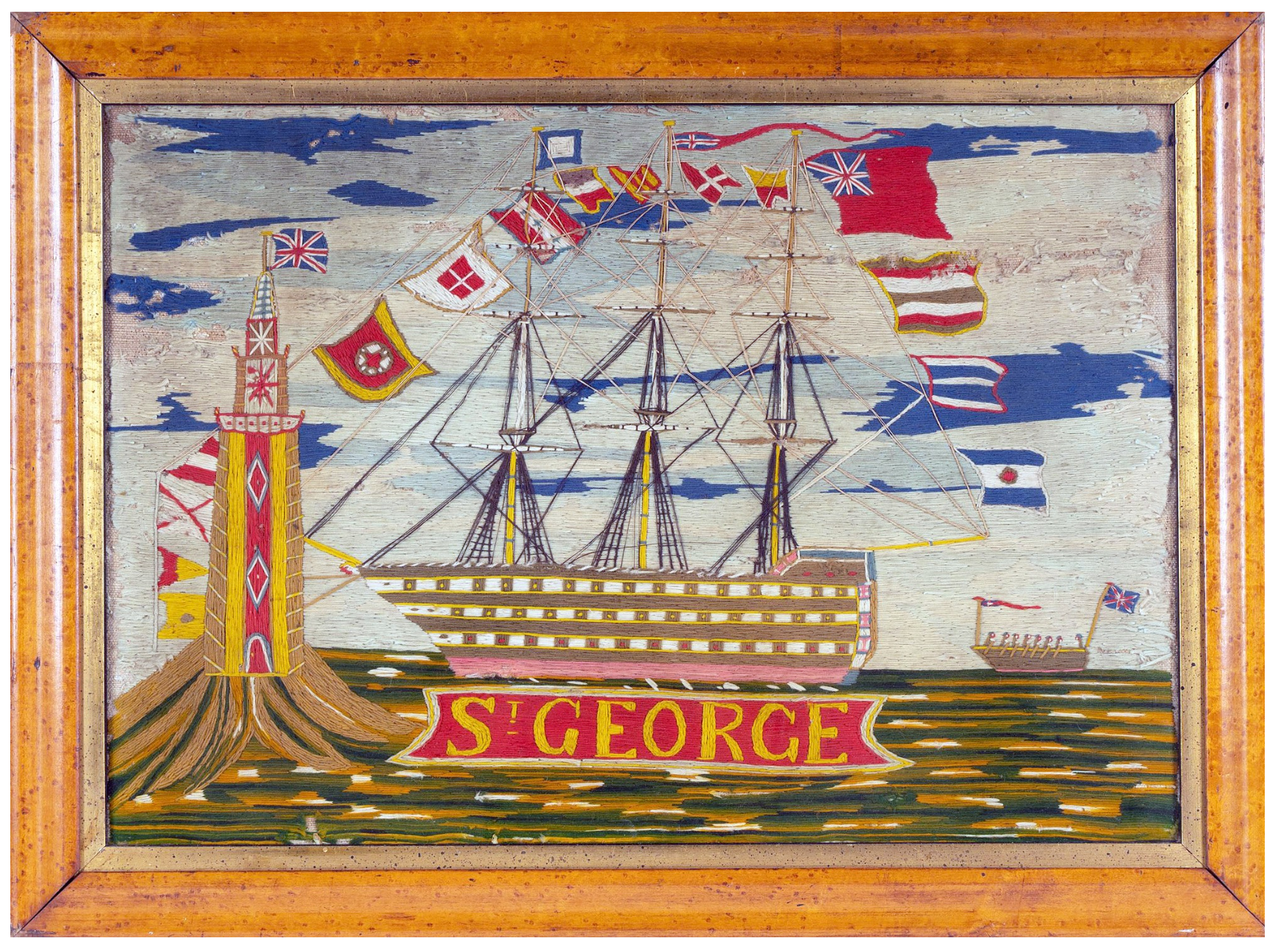
The less common type of woolworks are commemorative pieces that recorded important and historically significant events including battles, , rescues, fleet reviews etc. Often you'll see these are larger pieces with multiple different vessels.

Finally, the third type are the love-tokens. There is some speculation about whether these were generally stitched by sailors, or whether they were created in ports as souvenirs for sailors to take home. These are a particular favourite of mine as I find them deeply moving. They often will have stitched phrases like "my darling please be true, until I return to you", or "the heart of me is here, where the sea meets the sky". My grandpa was a sailor and the poem Sea Fever by John Masefield has a deep connection for me as a reminder of him. One day I hope to be able to create our own woolwork love-token, a tribute to him, capturing some of those majestic lines of the poem... I must go down to the seas again, to the lonely seas and the sky.

The apex of the sailor’s woolwork is considered to be the period 1860-1880, however, the craft continued as a popular pastime among sailors into the 20th century through to the end of the First World War. However it then sadly, like many traditional crafts, went into rapid decline. It is only in recent years that the rising appreciation for folk or 'outsider' art has prompted a greater appreciation of antique woolworks and resulted in a surge in demand.
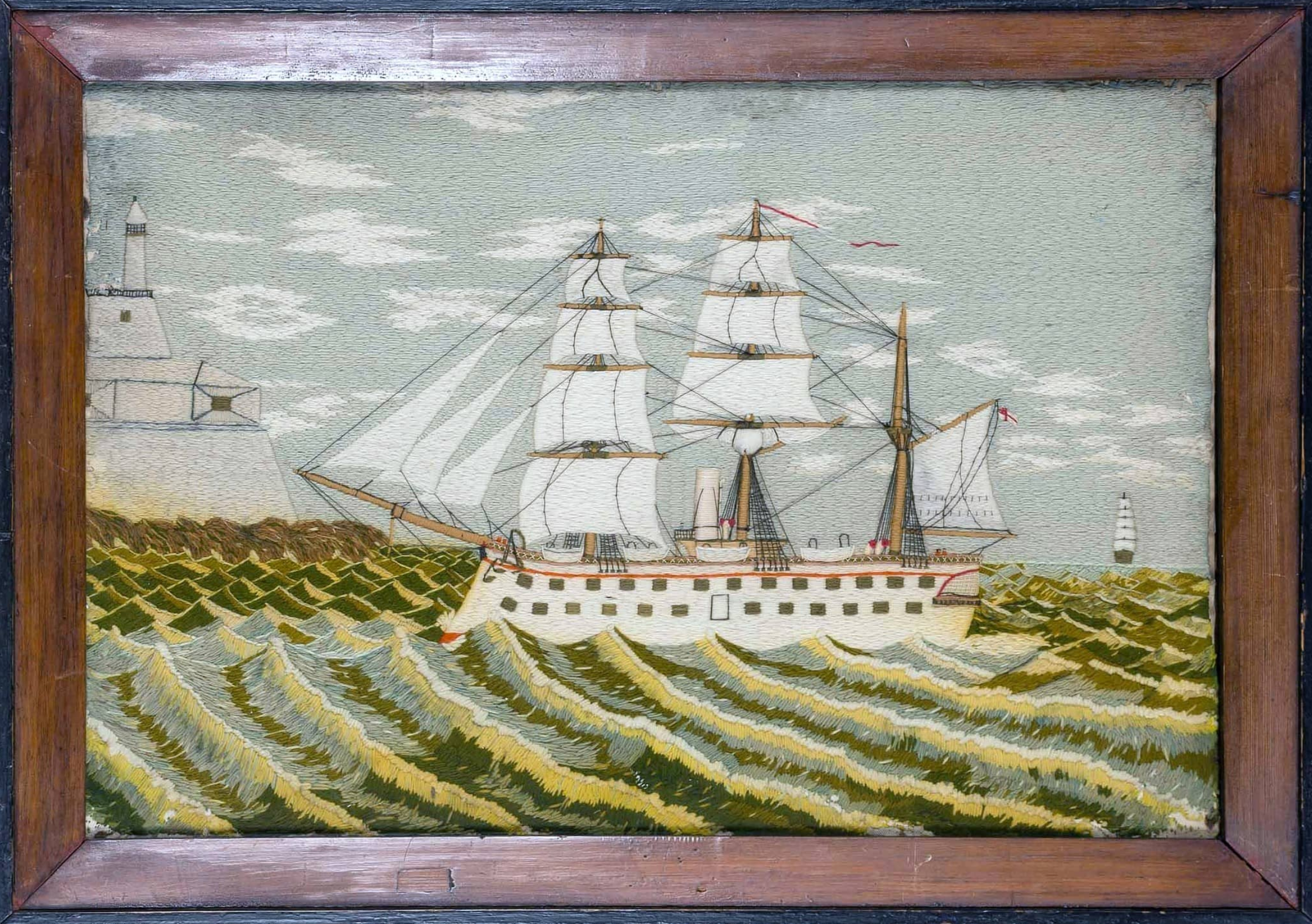
Artists like Alfred Wallis and John Craske, who have gained recognition over the last decades, have been at the forefront of bringing the interest in these crafts back to life. Today, there is one sailor, Norfolk-based Colin Millington, who brings the tradition of sailor's woolworks into the modern world. Taking inspiration from historical woolworks, as well as the places he saw during his time in the Royal Navy, the Merchant Navy, and as a Coast Guard, Colin has developed his own unique and recognisable style. He sells his unique pieces through the Norfolk-based gallery, Paffron and Scott.
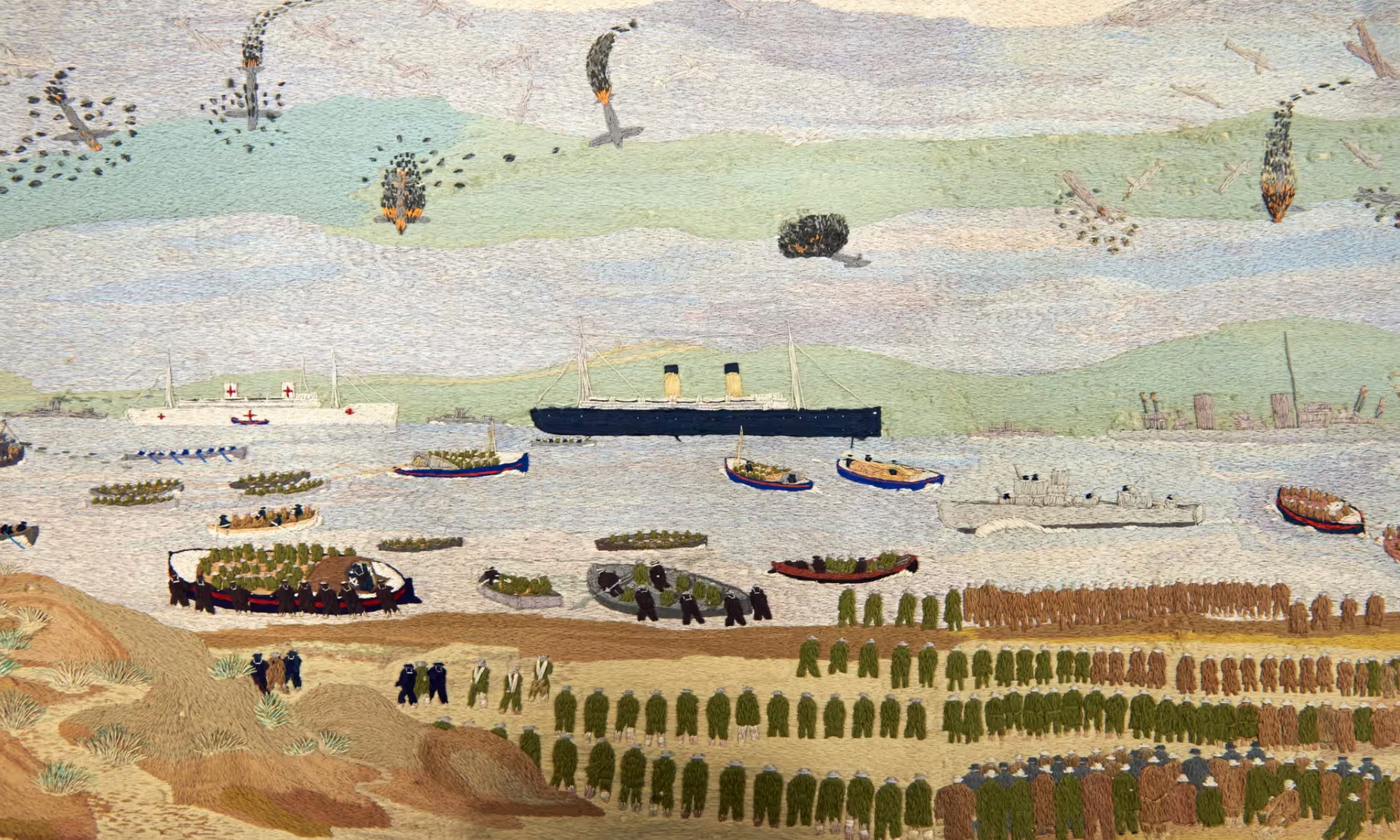

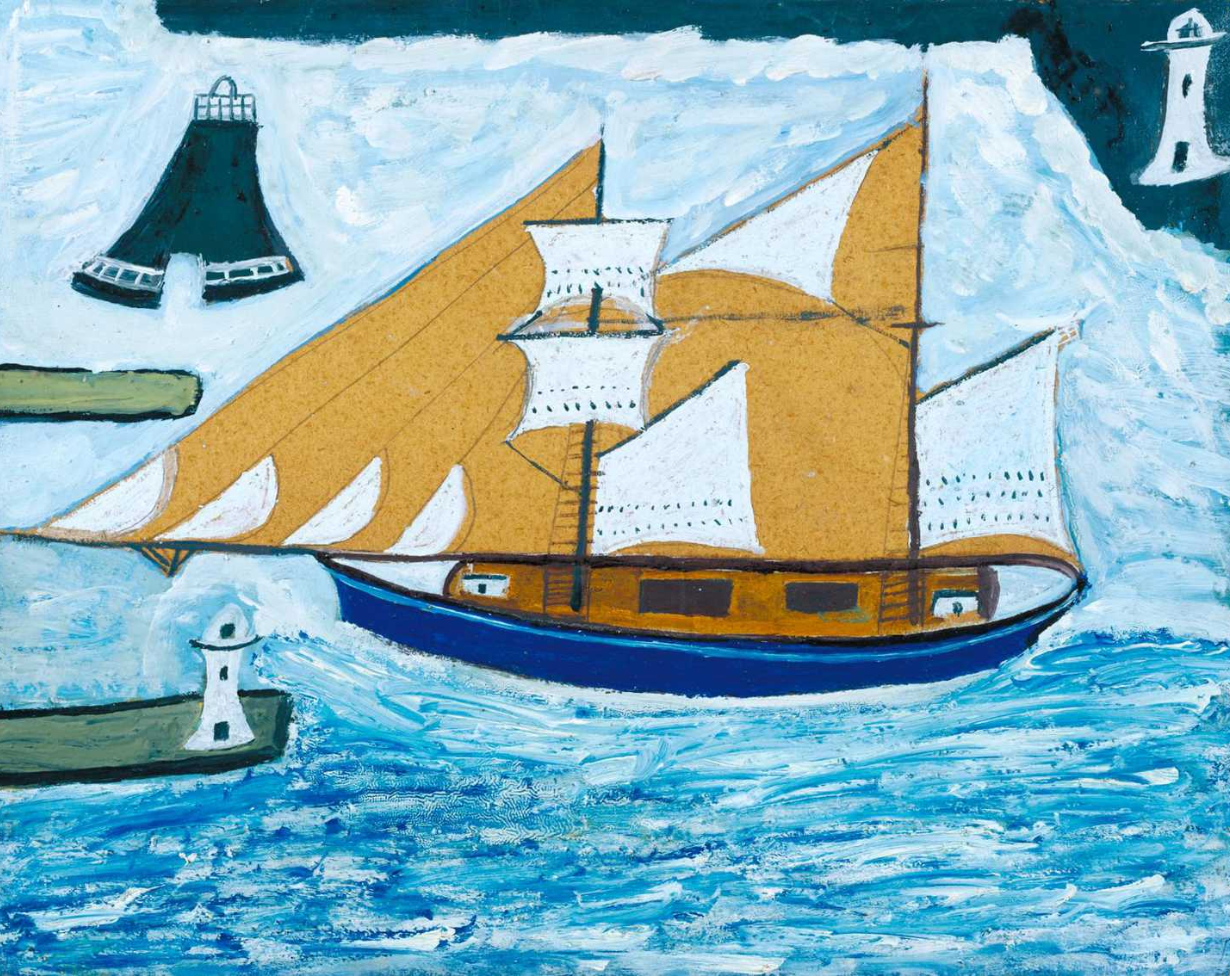
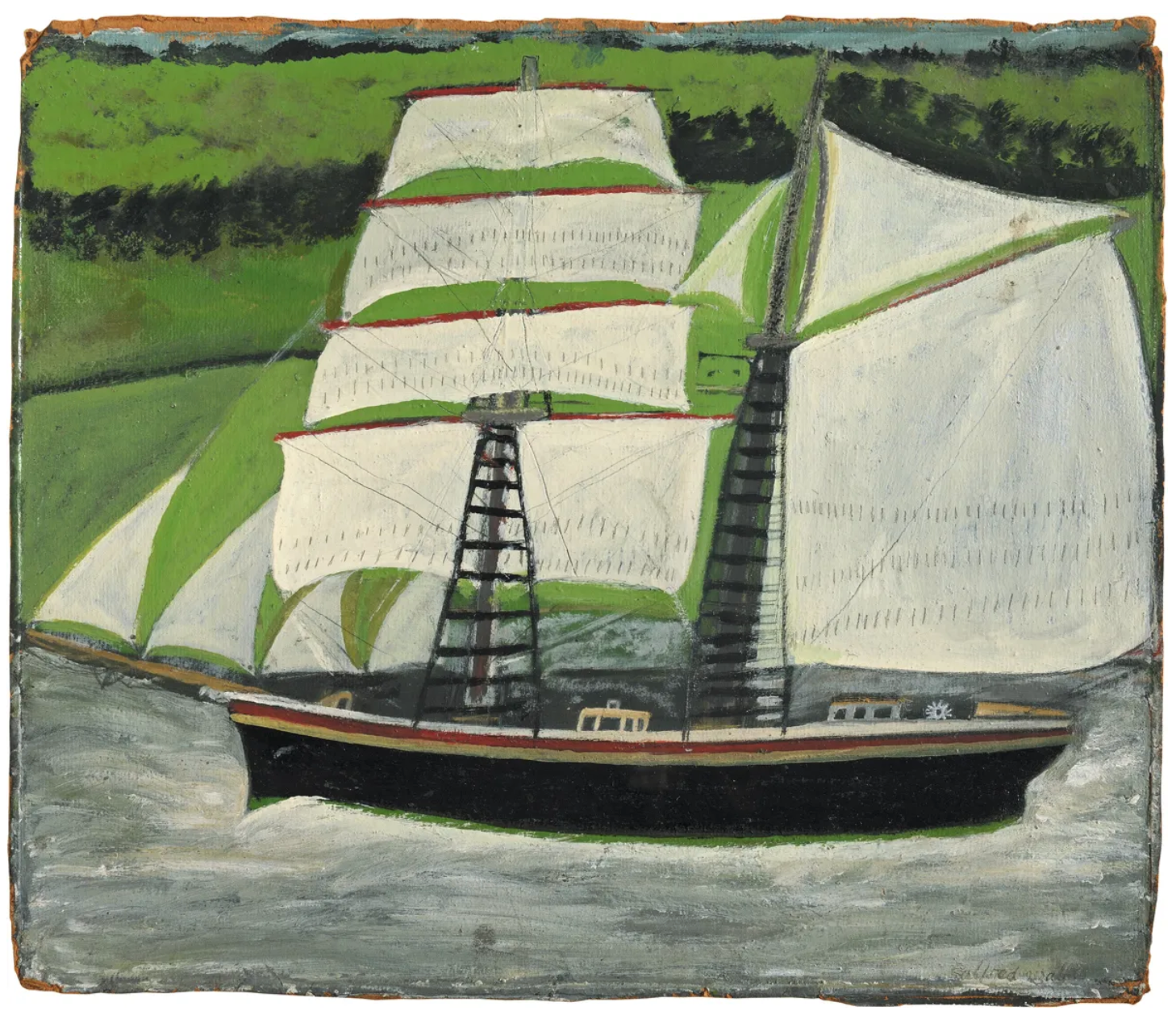
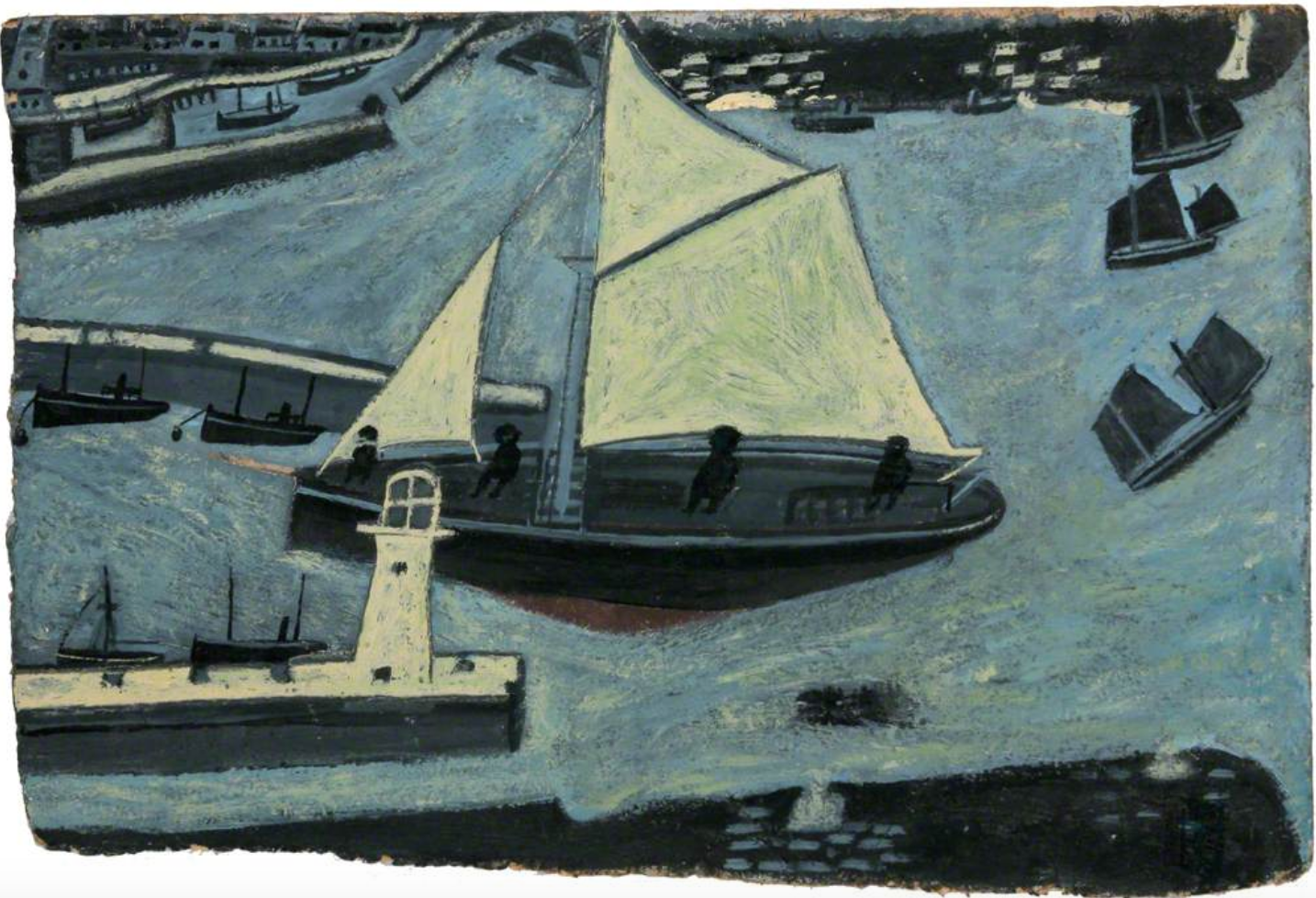
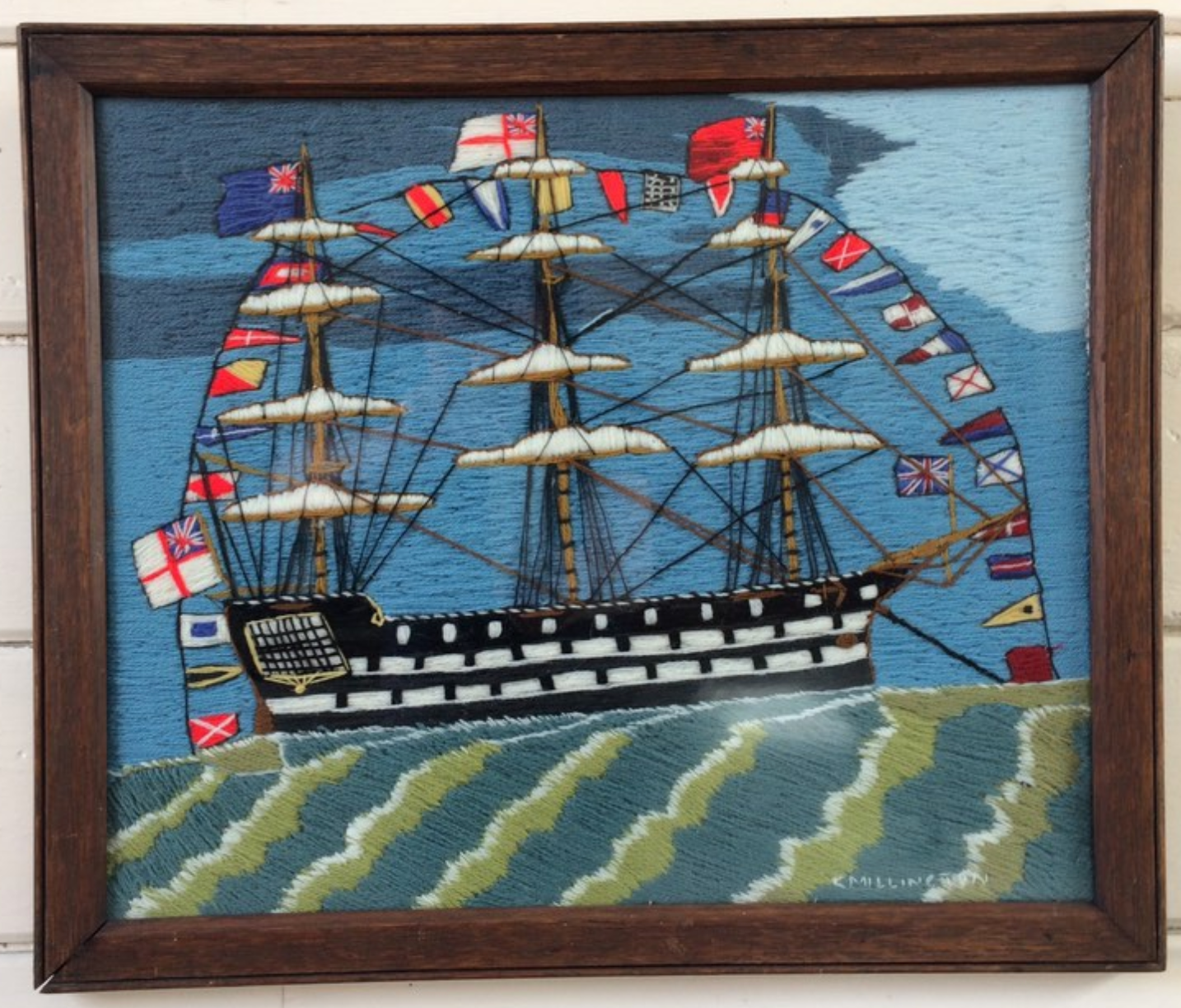

I introduced our range, The Woolies, inspired by my passion for these beautiful pieces and a desire to preserve the heritage of woolwork stitching. Additionally, as they have soared in popularity, originals have become increasingly expensive making them very inaccessible. Our Woolies range is my own take on the craft. Whilst they are based on fictional ships and use my more vibrant colour palette, our woolies retain the character of an original broadside woolwork and the simplicity of my own treasured woolwork. These pieces are my interpretation.


